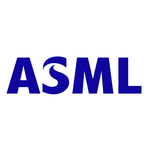US Tech Offensive: xLight's $40M Powers Chip Laser Race
July 27, 2025, 9:38 am

Location: United States, California, Palo Alto
Employees: 51-200
Founded date: 2015
US startup xLight has secured $40 million in funding. This capital aims to build a prototype for a new class of laser. This laser is critical for Extreme Ultraviolet (EUV) lithography machines. These machines create smaller, faster chips. The effort seeks to reclaim American leadership in a technology crucial for modern computing and artificial intelligence. China's aggressive investment in this field underscores the urgency. The US aims to reverse a past strategic error, where a key American laser technology firm was acquired by a foreign entity. xLight plans to leverage US national lab expertise, building a resilient domestic and allied supply chain. This vital initiative impacts global chip production and national security.
The global chip industry faces a critical juncture. Advanced semiconductors power modern life. They drive artificial intelligence, accelerate data processing, and enable national security. The United States seeks to reassert its dominance in this vital sector. A Silicon Valley startup, xLight, spearheads a crucial new effort. It recently secured $40 million in funding. This capital fuels the development of a groundbreaking laser technology. This laser is pivotal for the next generation of chip manufacturing.
Extreme Ultraviolet (EUV) lithography machines are central to producing smaller, faster chips. These complex tools etch intricate patterns onto silicon wafers. Every advanced chip relies on them. xLight's new laser technology will sit at the heart of these machines. Its innovation promises to revolutionize chip production. It could enable factories to turn out advanced silicon wafers more quickly. It could also reduce manufacturing costs. This efficiency is critical for meeting surging global demand.
The technology behind xLight's laser is cutting-edge. It builds upon principles from massive particle accelerators. These powerful machines are typically used in advanced physics research. US national labs have pioneered much of this fundamental science. xLight is now translating this expertise into industrial application. Their goal is to create an operational prototype by 2028. This timeline is aggressive. It reflects the urgency of the mission.
The geopolitical stakes are immense. Europe's ASML is currently the sole global supplier of EUV machines. This monopoly highlights a vulnerability. The US government has long worked to prevent these machines from reaching China. Such controls are deemed essential. They protect American technological superiority. China, however, is aggressively pursuing its own capabilities. Chinese firms are heavily investing in EUV research. They seek self-sufficiency. This creates a high-stakes technological arms race.
A significant past misstep looms large. Decades ago, a US firm, Cymer, perfected early EUV laser technology. ASML acquired Cymer over a decade ago for $2.5 billion. This acquisition solidified ASML's dominant market position. Many now view this as a strategic error. It effectively transferred critical US innovation abroad. This loss of indigenous capability underscored a need for renewed domestic investment. xLight's rise directly addresses this historical gap.
Reclaiming leadership requires a concerted effort. xLight is not working in isolation. It plans to source many prototype components from US national labs. This approach fosters a domestic supply chain. It strengthens national capabilities. Building this ecosystem within the US is paramount. It reduces reliance on foreign suppliers. It enhances supply chain resilience. This strategy ensures future innovation remains under US control.
The investment community recognizes xLight's strategic importance. Playground Global led the recent financing round. Other notable investors joined, including Boardman Bay Capital Management. Morpheus Ventures, Marvel Capital, and IAG Capital Partners also contributed. This broad financial backing signals strong confidence. It validates xLight's vision and technological promise. The funds will accelerate prototype development. They will also build necessary infrastructure.
xLight's path involves collaboration with industry giants. While no formal business partnership exists, ASML has provided xLight with critical technical requirements. This informal exchange is crucial. It ensures xLight's laser will meet the rigorous standards needed for integration into EUV systems. This pragmatic approach highlights a shared global interest. Advancing chip technology benefits everyone.
The future of advanced computing hinges on these developments. Faster, smaller chips unlock new possibilities. They enable more powerful AI models. They drive innovation in countless industries. Securing a leading position in chipmaking laser technology is non-negotiable for US economic and national security. xLight represents a vital step. It aims to put American innovation back at the forefront of this defining technological frontier. The race is on. The stakes could not be higher. This effort is about more than just a laser; it's about shaping the global tech landscape for decades to come. The United States is making its move.
The global chip industry faces a critical juncture. Advanced semiconductors power modern life. They drive artificial intelligence, accelerate data processing, and enable national security. The United States seeks to reassert its dominance in this vital sector. A Silicon Valley startup, xLight, spearheads a crucial new effort. It recently secured $40 million in funding. This capital fuels the development of a groundbreaking laser technology. This laser is pivotal for the next generation of chip manufacturing.
Extreme Ultraviolet (EUV) lithography machines are central to producing smaller, faster chips. These complex tools etch intricate patterns onto silicon wafers. Every advanced chip relies on them. xLight's new laser technology will sit at the heart of these machines. Its innovation promises to revolutionize chip production. It could enable factories to turn out advanced silicon wafers more quickly. It could also reduce manufacturing costs. This efficiency is critical for meeting surging global demand.
The technology behind xLight's laser is cutting-edge. It builds upon principles from massive particle accelerators. These powerful machines are typically used in advanced physics research. US national labs have pioneered much of this fundamental science. xLight is now translating this expertise into industrial application. Their goal is to create an operational prototype by 2028. This timeline is aggressive. It reflects the urgency of the mission.
The geopolitical stakes are immense. Europe's ASML is currently the sole global supplier of EUV machines. This monopoly highlights a vulnerability. The US government has long worked to prevent these machines from reaching China. Such controls are deemed essential. They protect American technological superiority. China, however, is aggressively pursuing its own capabilities. Chinese firms are heavily investing in EUV research. They seek self-sufficiency. This creates a high-stakes technological arms race.
A significant past misstep looms large. Decades ago, a US firm, Cymer, perfected early EUV laser technology. ASML acquired Cymer over a decade ago for $2.5 billion. This acquisition solidified ASML's dominant market position. Many now view this as a strategic error. It effectively transferred critical US innovation abroad. This loss of indigenous capability underscored a need for renewed domestic investment. xLight's rise directly addresses this historical gap.
Reclaiming leadership requires a concerted effort. xLight is not working in isolation. It plans to source many prototype components from US national labs. This approach fosters a domestic supply chain. It strengthens national capabilities. Building this ecosystem within the US is paramount. It reduces reliance on foreign suppliers. It enhances supply chain resilience. This strategy ensures future innovation remains under US control.
The investment community recognizes xLight's strategic importance. Playground Global led the recent financing round. Other notable investors joined, including Boardman Bay Capital Management. Morpheus Ventures, Marvel Capital, and IAG Capital Partners also contributed. This broad financial backing signals strong confidence. It validates xLight's vision and technological promise. The funds will accelerate prototype development. They will also build necessary infrastructure.
xLight's path involves collaboration with industry giants. While no formal business partnership exists, ASML has provided xLight with critical technical requirements. This informal exchange is crucial. It ensures xLight's laser will meet the rigorous standards needed for integration into EUV systems. This pragmatic approach highlights a shared global interest. Advancing chip technology benefits everyone.
The future of advanced computing hinges on these developments. Faster, smaller chips unlock new possibilities. They enable more powerful AI models. They drive innovation in countless industries. Securing a leading position in chipmaking laser technology is non-negotiable for US economic and national security. xLight represents a vital step. It aims to put American innovation back at the forefront of this defining technological frontier. The race is on. The stakes could not be higher. This effort is about more than just a laser; it's about shaping the global tech landscape for decades to come. The United States is making its move.


